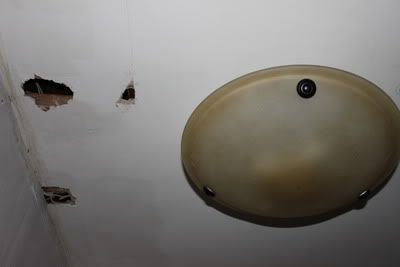I've been out of the trade (mason contractor) for nearly 30 years; so i do not have the answers you are looking for. i do have another of my true stories to bore ya all with. When I was learning the trade, I worked with just about every material available from putty to rock. When i started my own biz, I still worked with whatever was called for. About two weeks into my own contracting, I was asked by a neighbor to make a patch in their kitchen ceiling. The material in question was old plaster, including spider cracks all over the entire ceiling. I looked into the attic and discovered the lathe was all wood of various widths, so i knew it had been there for many a moon. I worked out an estimate suggesting, instead of using plaster, they should think about the newest material on the market at the time, sheetrock.
Why not just make a patch?
That whole ceiling is ready to collapse and you don't want to be around when it does.
Oh come on. Can't you just use a little spackle or something.
Nope. You can get somebody else to do that and then you can sue them for your broken heads anytime there after.
After considerable discussion, I agreed to attempt to make a patch using a dovetailed piece of Rock Lathe and key it in. Yeah, I would try that, but before I touch any part of the ceiling, I had to seal the hotair registers as well as seal up the doors into the other rooms adjacent to the kitchen. "Now, is that really necessary?"
"Yup. if you expect me to do anything to your ceiling" All indications were that I was really being way too careful, especially when I covered the sink, stove, fridge and moved all of the movable fixtures out of the room. I had previously explained that the lathe was unpredictable as far as holding power, the plaster was probably reinforced with horsehair (Today, concrete and plaster are reinforced with fiberglass "hairs") to hold it all together. I could come down with a very big bang. What had started to disintegrate, and that I was to repair, was an oemebic shaped circle about 18" diameter where the old white coat had fallen away from the browncoat base. the browncoat was very crumbly and I knew that even a very slight disturbance might bring the entire ceiling crashing down. In those days, it was not a law to wear hard hats, but it was a very sensible piece of equipment to have on hand. Once i had every immovable object covered with dropclothes and cushioned with old mattresses and pillows, I donned my trusty hard hat. The helmets in those days looked like those tin hats the Brits wore during WWII, and even tho plastic, were heavy and nobody liked wearing them. With the wide brims, I was glad they were constructed so. I still have a couple of those old monsters in my cellar. Even tho heavy and somewhat ugly, there are times when they make a lot more sense than those narrow brimmed H-hats they wear today.
As i started to climb my little 4ft step ladder with a stiff wire brush in my hand to try to sluff off some of the crumbly surface plaster, somebody tried opening one of the taped doors into the room. I yelled for them to stay out, but whoever wanted in was quite determined. I got down from the ladder and headed out the front door with tool bag and ladder in hand yelling for them to find somebody else to do the job. After a spell of laying down the law (MY LAW) I finally went back inside while the owners watched thru an outside window. I scratched away at the lose plaster for a few minutes and then, very carefully, tapped at a corner of the base with a very sharp chisel to loosen some more of the debris that seemed not to be too interested in being removed with the brush. I had intended to just sort of scratch with the corner of the chisel to determine if it would be possible to cut a key thru the plaster; when all of a sudden, the entire kitchen was a mass of plaster dust, a direct result of total ceiling removal. I had a big blue nose from where that wide brimmed hard hat had collided with that appendage and the top of my nose was cut from where the bridge of my glasses had dug in.
The owners were so happy that I was the one wearing that ceiling instead of one of them, I got the job of tearing off the plastered walls and redoing the entire room. They wanted me to do the entire house when i finished, but i assured them I knew a contractor with larger crew who would be very happy to help them with that project. I told them one blue nose was quite enough for me. [scratch chin]
Tinker



